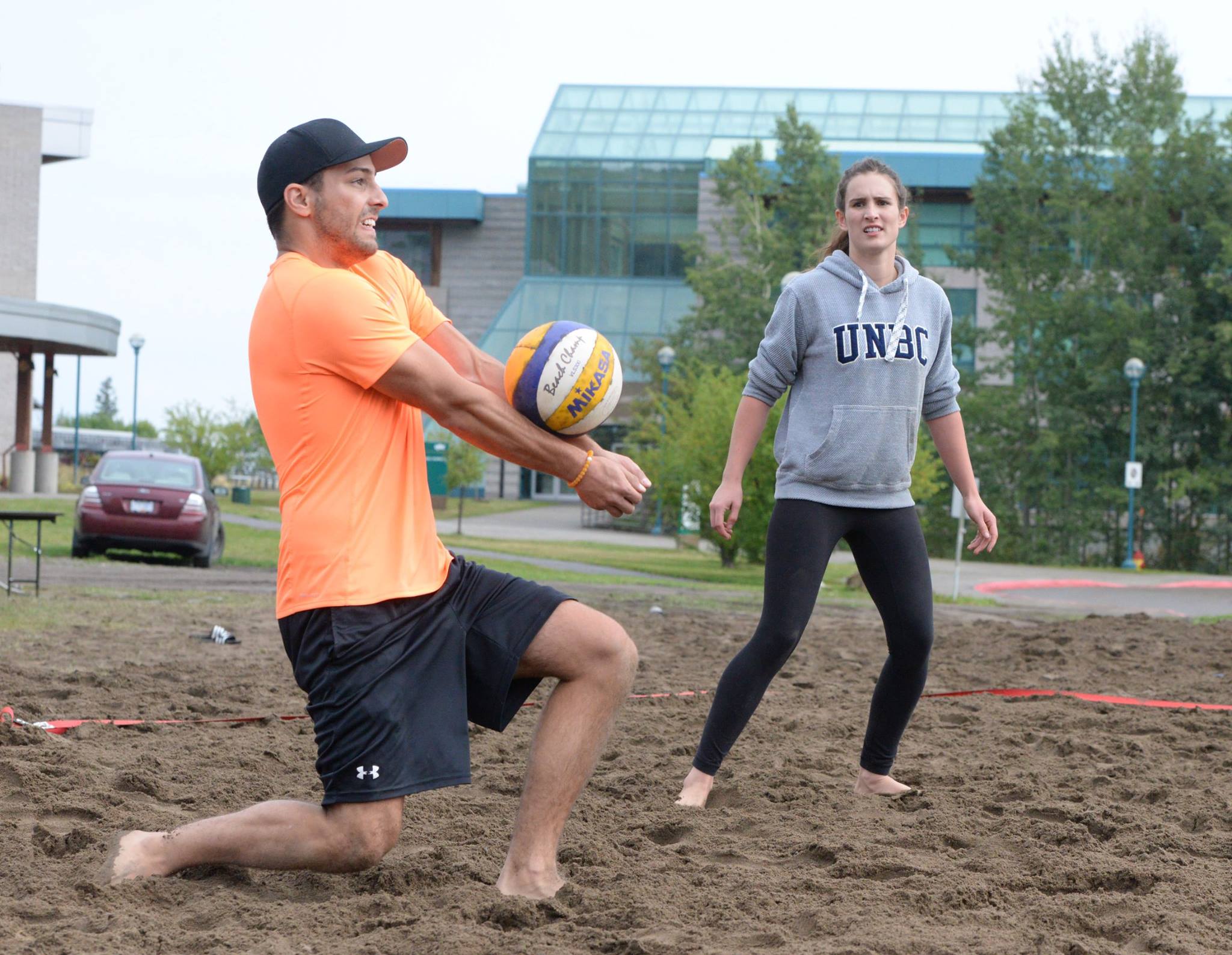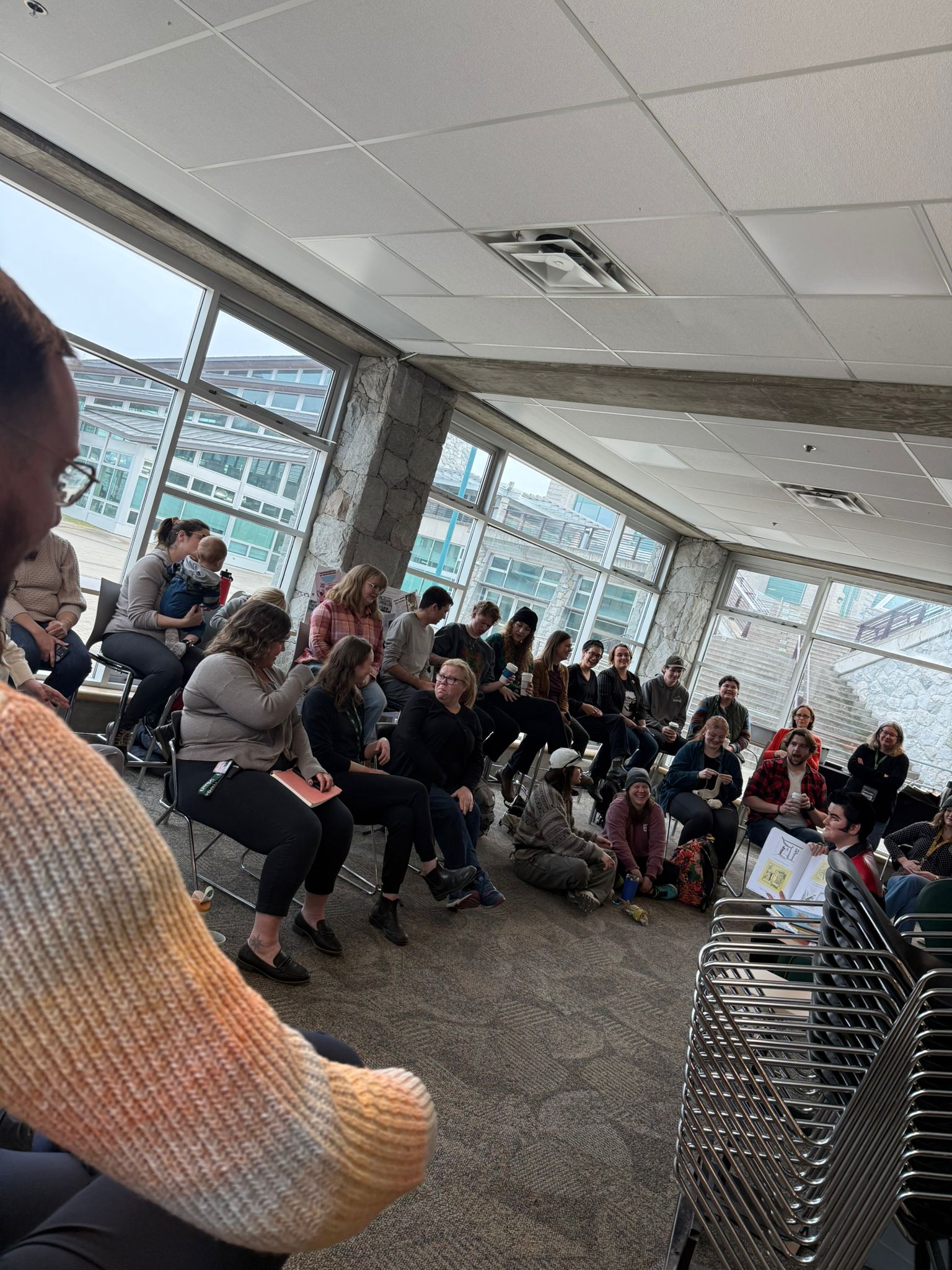Everyone has occasionally been at this swimming pool, enjoying waterslides, hot tubs, sauna or swimming lanes. We know we are safe at the pool because lifeguards are always ready to save our lives. However, we must realize how skilled lifeguards are and what they go through. Today, head lifeguard and swimming instructor Sydney Bazinet will explain what it means to be a lifeguard.
Sydney has worked at the aquatic center and Canfor leisure pool for four years. As a lifeguard, Bazinet keeps the public safe in the water by educating them on the rules, knowing first aid, and keeping the facility clean. Responsibilities as a Headguard are opening and closing both pools, being in charge of other guards’ decisions, and leading in procedures when situations happen. Sydney trains new guards, communicates with all staff and changes the schedule. She goes into instructors’ lessons and helps cover the cashiers for their lunches/breaks. As a swim instructor, Sydney ensures the kids are safe, learning swimming skills and having fun. Bazinet always ensures that kids are comfortable and encourages them to do their best. As a Lifesaving instructor, Sydney teaches people the courses they need to become a lifeguard, and she shows them how they can help people in first aid situations.
Being a lifeguard contains much more than we can see by being in the pool as a guest. Lifeguards have to be prepared and be on their toes at all times as things change quickly for the worst when in the water, Bazinet said. We have to cover a zone within 10-30 seconds by using a scanning pattern to ensure that everyone is safe. Lifeguards rotate every 15 minutes through each zone, looking at different zones/people for hours. Bazinet constantly reminds the public of the rules to ensure they are safe. As a lifeguard, Sydney is responsible for keeping fit and refreshing her mind with all the first aid and scenarios that could happen in an aquatic setting.
As a swimming instructor Sydney teach the red cross swimming criteria, and from next month program will be changed to the Swim for Life program. As an instructor, Bazinet prepares sessions and lesson plans for children. Pool swimming programs have different levels dependent on the skills and age, and every child can find a level that will suit them. Every lesson is built differently based on the swimmer’s ability, and instructors pay close attention to every child. At the lesson, Sydney starts with songs or a game for the preschool kids while the older kids are doing a distance swim. After warming up, preschool kids work on the skills such as front and back floats, glides and safety skills. For the older swim kids Bazinet is building swimming skills like front and back crawl, breaststroke, and side stroke, also we are working on strength and endurance, as well as safety
skills. Sydney evaluates children at the end of the course a making a report card for the parents, where she shows how children improved and what they can work on.
Sydney said that the most exciting part of an instructor’s job is watching kids go through all the swimming lessons to become better swimmers. Watching children develop safety and swimming skills makes Bazinet happy. “I love seeing the regulars that come in, and I am thankful to hear how much they appreciate all that the lifeguards do while they spend their time at the pool,” said Sydney.
Sydney learned about this job because her sister Amanda was a lifeguard for four years, and she followed in her sister’s footsteps. Bazinet chose this job because she loves knowing first aid and being able to help people in certain situations. Sydney is very extroverted, so this job is perfect if you love talking with people of all ages. Teaching swimming lessons is also so rewarding when you see the kids more comfortable around the water while also being safe. The lifeguard job has also pushed Sydney out of her comfort zone when dealing with first aid situations and given her many life skills when communicating with the public.
Syndey said that she is suggesting people become lifeguards because being a lifeguard is very rewarding regarding safety and communication skills. By working at the pool, Sydney met amazing people along the way who have been great role models and taught her what it means to be a great lifeguard. Everyone should be knowledgeable in First Aid and understand safety in the water. During COVID-19, the drowning rate went up due to the lack of swimming lessons. People were less aware of the situations that could happen in the water. Even if you are going through the courses we discussed above and are not interested in the job, you will still build skills of how to stay safe in the water and spread the message to help out loved ones and others, said Bazinet.
To become a lifeguard, you must go through several courses that will test you mentally and physically. The first step is to take a Bronze Medallion course and be 13 years old. The bronze Medallion course consists of knowledge, fitness, skill, and judgment items that will lead you to build on learning CPR, how to be safe in the water, endurance, and strength challenges. Also, you must complete fitness items in a specific time to pass the course. The next step is Bronze Cross, and you also need to be 13 years old and pass Bronze Medallion to register for the course. Bronze Cross consists of the same items as Bronze Medallion; however, it is more challenging. In addition to the previous course, Bronze Cross includes two-person rescues, scanning, supervision, assistant lifeguard situations and spinal injuries. To pass this course, you must complete fitness and demonstrate your judgement in lifesaving situations. Then you must complete a First Aid course and take a writing exam. The next course you need to take is a National Lifeguard (NL) and be 15 years old while completing the courses bronze medallion/Cross and First Aid. The National Lifeguard course prepares candidates for the complications of saving lives in the swimming pool and preventing incidents by actively scanning and educating patrons about safe behaviour and pool procedures. After lifesaving courses, candidates must take two courses from Red Cross to become a swimming instructor. Such courses prepare candidates to teach children swimming and safety skills. After candidates finished all the required courses, they can apply for a lifeguard position and would be chosen to go through the skill test and interviews.
As a lifeguard, you have many opportunities for growth in the profession. You can become an instructor for courses such as a bronze medallion, Bronze Cross, National Lifeguard, First Aid, and Water Safety instructor, as well as an Aquafit instructor. By becoming an instructor, you are building new skills and gaining more knowledge while keeping yourself up with the pool rules and procedures, first aid skills, swimming skills and safety.





